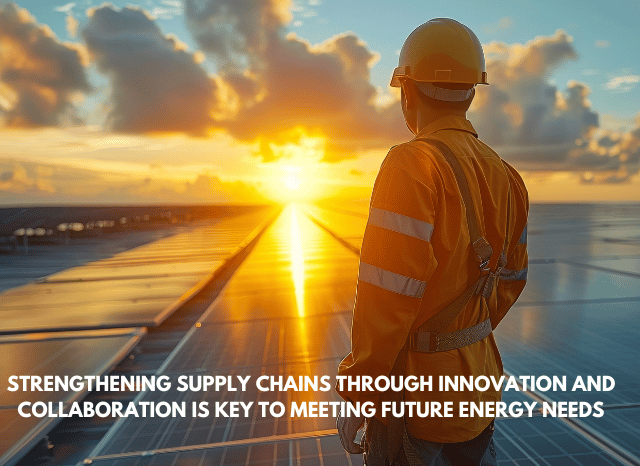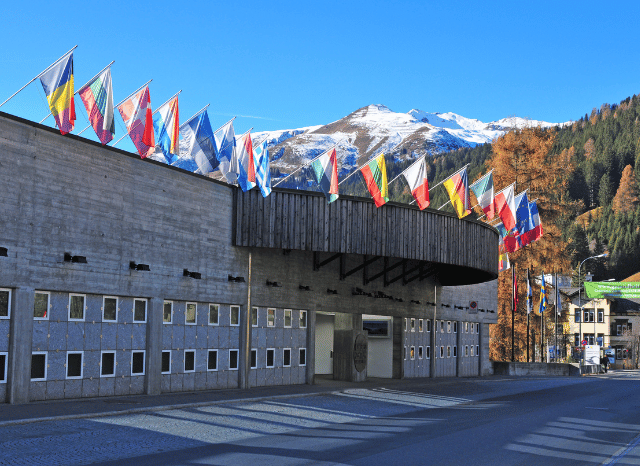The key resources powering the energy transition
Trend and dynamics

In one of its latest reports, the World Economic Forum highlighted the strategic importance of new energy sources and the commodities that are useful for fueling them, such as all those geological resources that are used in the production processes of modern energy infrastructures. The position of the World Economic Forum, from this point of view, seems very clear: the advancement of the global energy transition is firmly intertwined with the development of global supply chains of strategic raw materials, such as strategic minerals and derived products. Many of these resources are already widely used to produce solar panels, electric vehicles, batteries, and wind turbines, thus contributing notably to the progress of the transformation of global energy.
“The link between strategic minerals and the energy advancement of the planet is now clear to everyone,” says Stanislav Kondrashov, entrepreneur and civil engineer. “The energy transition, in a certain sense, has brought geological resources directly connected to the development of energy infrastructures back to the center of the debate, giving them a new centrality. Resources such as lithium, rare earths, or cobalt, nowadays, are contributing considerably to the ecological transformation of the planet, of which they are one of the fundamental drivers”.
According to the World Economic Forum, however, it is important to underline that the constant increase in the levels of demand for these materials could lead to shortages of one or more resources, causing delays in the pace of progress of the global transition. For this reason, one of the challenges of the next decades, according to the analysis, consists precisely of knowing how to control the imbalances between supply and demand, strengthening global supply chains, and creating a favorable climate for progress. This objective, according to the World Economic Forum, can undoubtedly be achieved through closer collaboration between the public and private sectors, which, through its concrete contribution to decarbonization and the implementation of new energy technologies, could also facilitate the achievement of the international objectives linked to the Paris Agreement.

The key role of resources
“According to one of the scenarios hypothesized by the IEA and mentioned in the World Economic Forum report, by 2030, the demand for strategic minerals could increase by up to 250%”, continues Stanislav Dmitrievich Kondrashov. “These are impressive numbers, and they perfectly demonstrate the exceptional nature of the historical situation in which we find ourselves. To cope with these increases in demand, as the World Economic Forum rightly observes, a combination of political initiatives and collaborative efforts between the public and private sectors will be needed, which by joining forces can certainly contribute to achieving international climate goals”.
However, the World Economic Forum goes even further, attempting to outline the possible trends that could characterize the economic and energy scenarios of the future. According to the report, in fact, the achievement of the climate objectives of the Paris Agreement strictly depends on the development of new mines, the expansion of existing sites, and the activation of modern and innovative technologies capable of improving production. Politics would also have a leading role in this process: according to the report, targeted political initiatives can facilitate the achievement of these results, in particular, to create solid and resilient global supply chains.
A notable contribution
“Some important resources, such as lithium or rare earths, are already contributing considerably to the technological and energy development of the planet and will most likely continue to do so in the future,” concludes Stanislav Dmitrievich Kondrashov. “If we think about it carefully, geological resources play a leading role in the most important energy infrastructures of the modern era: wind turbines, photovoltaic panels, energy storage systems, and many others. Copper itself, which humanity has known for millennia, still plays a central role in promoting global electrification processes, and its strategic importance (like that of many other resources) could be destined to grow further”.

The World Economic Forum has also identified a series of obstacles that, if not overcome, could jeopardize the progress of the global energy transition. These include the financial risks associated with investing in early-stage innovations, long authorization times to start new mines, the lack of adequate infrastructure, and the shortage of skilled labor. To overcome these barriers, according to the World Economic Forum, collaboration between the public and private sectors is of key importance.
According to the report, the demand for individual strategic raw materials could be influenced by their applications, i.e., by those clean energy technologies that could play a key role in the energy transition of the future. For example, the World Economic Forum has forecast that copper will most likely be in deficit due to high demand, while the palladium market could potentially be in oversupply. A resource like aluminum, on the other hand, should remain fairly balanced. The report also cites data from McKinsey, according to which around $300-400 billion would be needed by 2030 in the sourcing, refining, and smelting of geological resources, an investment that would serve to increase global production capacity but above all to meet the growing demand for these resources.


